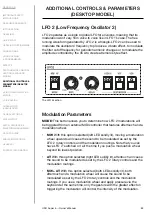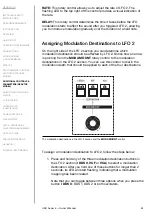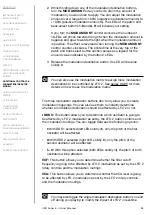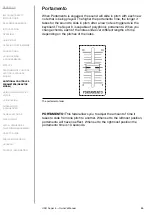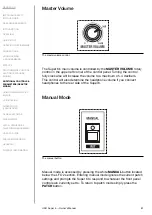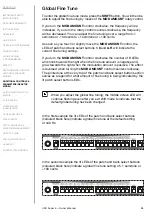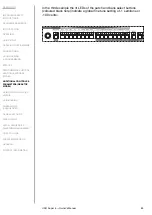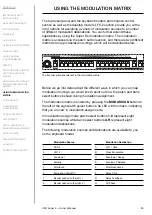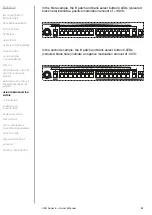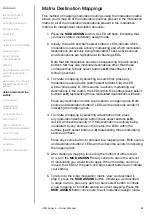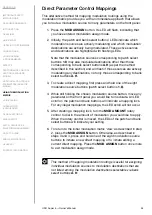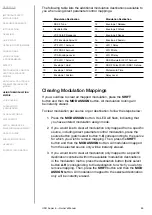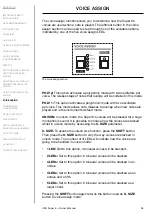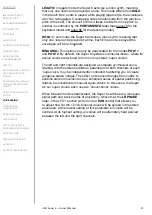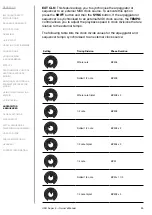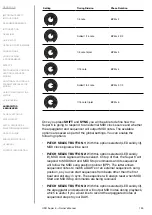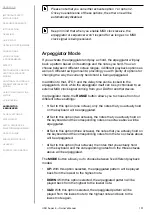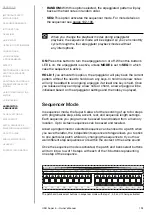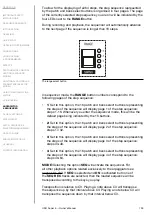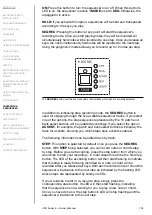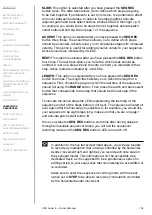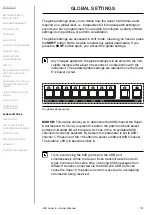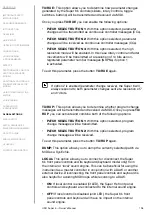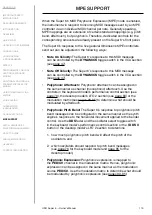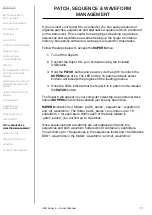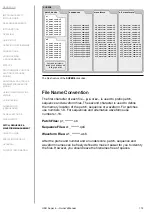
UDO Super 6 — Owner’s Manual
97
LEGATO:
In legato mode the Super 6 acts like a mono synth, meaning
that only one note can be played at a time. This mode differs from SOLO
in that each time a note is played while playing legato style, the envelopes
won’t be re-triggered. Overlapping notes will also slide from the previous
pitch to the next. The amount of time it takes to slide from one pitch to
another is controlled by the
PORTAMENTO
fader (see page 79 for the
keyboard model and page 86 for the desktop model).
SOLO:
In solo mode the Super 6 acts like a mono synth, meaning that
only one note can be played at a time. Each time a note is played the
envelopes will be re-triggered.
BINAURAL:
This option can only be deactivated for the modes
POLY 1
and
POLY 2
. By default, the Super 6 operates in binaural mode – where its
twelve voices are twinned to form six true stereo ‘super voices’.
The left and right channels are assigned a complete synthesizer voice.
Starting with the stereo oscillators, parameters of both channels of each
‘super voice’ may be independently controlled, facilitating you to create
gorgeous stereo images. The effect on the sound ranges from subtle to
extreme stereo movement and an enhanced sense of spatial positioning
relative to conventional monaural signal-chains. In this sense, the Super
6’s six ‘super voices’ each use two ‘conventional’ voices.
When binaural mode is deactivated, the Super 6 switches to a monaural
signal path and twelve notes of polyphony. Above that, the
LR PHASE
fader in the LFO 1 section will turn into a
PAN
control that allows you
to adjust how far the 12 non-binaural voices will be spread in the stereo
panorama. At the lowest setting of this parameter, all voices will be
centred. At its highest setting, all voices will be alternately hard panned
between the left and the right channels.

